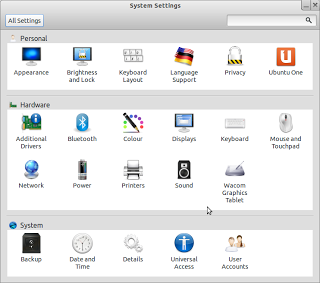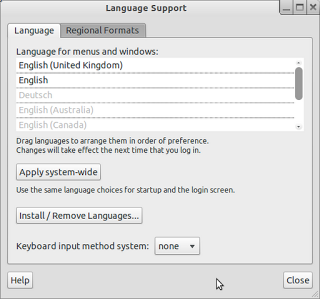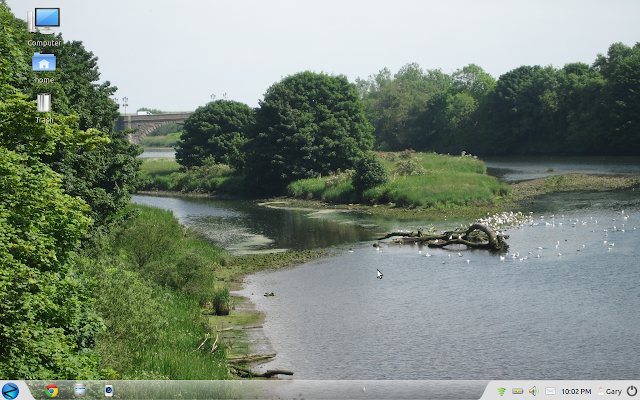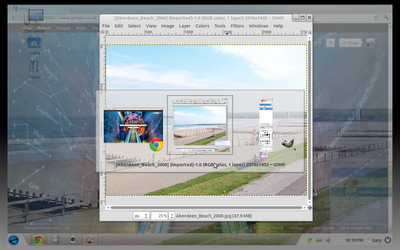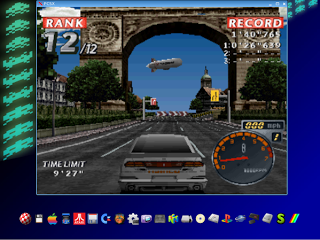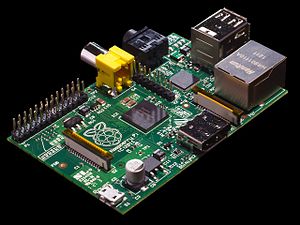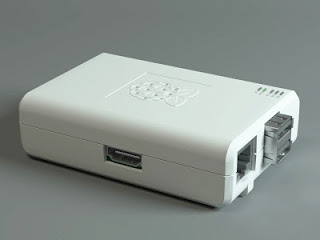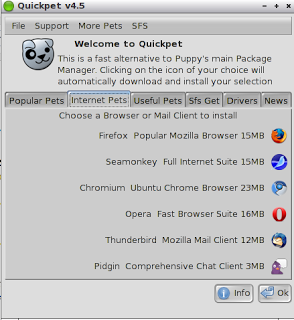Thursday, 26 July 2012
Summary
Puppy Arcade - Good idea but needs an update
8 comments:
Feel free to comment on any of the blog posts. Please try to be constructive.
Offensive messages will be removed as will blatant adverts for misleading products and sites.
Thanks for visiting my blog
Saturday, 21 July 2012
Introduction
- There are Android apps that are either useful or quite fun that are not available elsewhere.
- Android is incredibly lightweight and loads very quickly making it possible to get online very quickly.
- Battery life lasts forever.
Initially I tried writing this article using Android but it was very problematic. The scrolling was a nightmare and then the browser kept typing all my commands into the search bar rather than the editor.
So Android for a netbook. Good idea? Not really, unless you have a touch screen one and a really good reason to do so.
The following link will help turn off screen rotation however this can be done by clicking the clock and clicking the off switch next to auto rotate (Android 4.0)
http://www.howtogeek.com/howto/26715/how-to-make-your-android-phone-stop-rotating-the-screen-when-you%E2%80%99re-reading-sideways/
Android on a netbook
Introduction
- There are Android apps that are either useful or quite fun that are not available elsewhere.
- Android is incredibly lightweight and loads very quickly making it possible to get online very quickly.
- Battery life lasts forever.
Initially I tried writing this article using Android but it was very problematic. The scrolling was a nightmare and then the browser kept typing all my commands into the search bar rather than the editor.
So Android for a netbook. Good idea? Not really, unless you have a touch screen one and a really good reason to do so.
The following link will help turn off screen rotation however this can be done by clicking the clock and clicking the off switch next to auto rotate (Android 4.0)
http://www.howtogeek.com/howto/26715/how-to-make-your-android-phone-stop-rotating-the-screen-when-you%E2%80%99re-reading-sideways/
5 comments:
Feel free to comment on any of the blog posts. Please try to be constructive.
Offensive messages will be removed as will blatant adverts for misleading products and sites.
Thanks for visiting my blog
Wednesday, 18 July 2012
So today's problem
How can I get Thunderbird to show the dates in UK format dd/mm/yyyy?Setting up my email to work with Zorin was easy. Simply click on the little envelope icon in the system tray and click mail. A wizard appeared asking me to type in my name, email address and password and Zorin did the rest. As I use gmail this process worked perfectly. Well almost perfectly.
When I opened Thunderbird for the first time all my messages were pulled in from GMAIL but the dates were in the US format mm/dd/yyyy. Now whilst this is hardly a show stopper it was a tad annoying.
I went through the preferences within Thunderbird initially but couldn't find a setting so searched online and found out that Thunderbird uses the date settings for the operating system.
Changing your language settings in Zorin 6
The next step therefore is to work out how to change the settings so that all my applications in Zorin use the UK date format.By clicking on the Z icon and selecting system settings the following screen was displayed. (You can also get to this screen by selecting the off button in the system tray and choosing system settings).
On this screen you will see an icon for language support. If you click the language support icon a new screen appears with two tabs. The first tab provides a list of languages, the second tab enables you to set regional formats.
To get Thunderbird (and every other application to use UK date settings) I changed the language list of have English (UK) as the first language in the list by dragging it and on the regional formats tab I changed the first drop down to also be English (United Kingdom). Finally click apply system-wide.
To get the settings to change log out and log back in again.
Now restart Thunderbird and the dates will be in UK format.
Problem Solved!!!!
Be careful
Zorin Tips #1 - Set Thunderbird date to UK Format
So today's problem
How can I get Thunderbird to show the dates in UK format dd/mm/yyyy?Setting up my email to work with Zorin was easy. Simply click on the little envelope icon in the system tray and click mail. A wizard appeared asking me to type in my name, email address and password and Zorin did the rest. As I use gmail this process worked perfectly. Well almost perfectly.
When I opened Thunderbird for the first time all my messages were pulled in from GMAIL but the dates were in the US format mm/dd/yyyy. Now whilst this is hardly a show stopper it was a tad annoying.
I went through the preferences within Thunderbird initially but couldn't find a setting so searched online and found out that Thunderbird uses the date settings for the operating system.
Changing your language settings in Zorin 6
The next step therefore is to work out how to change the settings so that all my applications in Zorin use the UK date format.By clicking on the Z icon and selecting system settings the following screen was displayed. (You can also get to this screen by selecting the off button in the system tray and choosing system settings).
On this screen you will see an icon for language support. If you click the language support icon a new screen appears with two tabs. The first tab provides a list of languages, the second tab enables you to set regional formats.
To get Thunderbird (and every other application to use UK date settings) I changed the language list of have English (UK) as the first language in the list by dragging it and on the regional formats tab I changed the first drop down to also be English (United Kingdom). Finally click apply system-wide.
To get the settings to change log out and log back in again.
Now restart Thunderbird and the dates will be in UK format.
Problem Solved!!!!
Be careful
0 comments:
Feel free to comment on any of the blog posts. Please try to be constructive.
Offensive messages will be removed as will blatant adverts for misleading products and sites.
Thanks for visiting my blog
Tuesday, 17 July 2012
One of the comments I received was that the screenshots were too small. As I am short of time this week I thought today's post would be a collection of Zorin screenshots in their full glory.
Now in my original post (http://everydaylinuxuser.blogspot.co.uk/2012/07/zorin-6-best-operating-system-i-have.html) about Zorin I might be accused of making Zorin look prettier because my background image is of a picturesque part of Aberdeenshire in Scotland.
Nothing can beat an image that mother nature conjures up which is why I have the image above as one of my many desktop backgrounds.
Anyone who thinks LINUX cannot be as professional as Microsoft or Apple operating systems should check out Zorin 6.
Yes they have taken a copy of the look and feel of Windows and for Mac users there is a Mac style interface but the Zorin development team have emulated the Windows 7 Menu perfectly.
I've read other blogs that said the search facility is erratic but every time I search for an application or a type of application the correct items appear.
The menus are organised logically and the whole system is incredibly easy to use. Performance wise Zorin 6 runs perfectly.
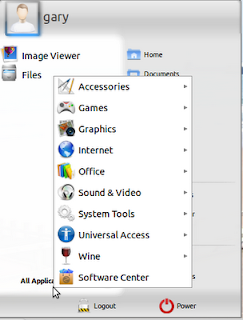 If you are a Windows XP user and you haven't seen Windows 7 then the above menu might not mean all that much to you.
If you are a Windows XP user and you haven't seen Windows 7 then the above menu might not mean all that much to you.How to get Zorin 6
Zorin 6 Screenshots
One of the comments I received was that the screenshots were too small. As I am short of time this week I thought today's post would be a collection of Zorin screenshots in their full glory.
Now in my original post (http://everydaylinuxuser.blogspot.co.uk/2012/07/zorin-6-best-operating-system-i-have.html) about Zorin I might be accused of making Zorin look prettier because my background image is of a picturesque part of Aberdeenshire in Scotland.
Nothing can beat an image that mother nature conjures up which is why I have the image above as one of my many desktop backgrounds.
Anyone who thinks LINUX cannot be as professional as Microsoft or Apple operating systems should check out Zorin 6.
Yes they have taken a copy of the look and feel of Windows and for Mac users there is a Mac style interface but the Zorin development team have emulated the Windows 7 Menu perfectly.
I've read other blogs that said the search facility is erratic but every time I search for an application or a type of application the correct items appear.
The menus are organised logically and the whole system is incredibly easy to use. Performance wise Zorin 6 runs perfectly.
 If you are a Windows XP user and you haven't seen Windows 7 then the above menu might not mean all that much to you.
If you are a Windows XP user and you haven't seen Windows 7 then the above menu might not mean all that much to you.How to get Zorin 6
4 comments:
Feel free to comment on any of the blog posts. Please try to be constructive.
Offensive messages will be removed as will blatant adverts for misleading products and sites.
Thanks for visiting my blog
Tuesday, 10 July 2012
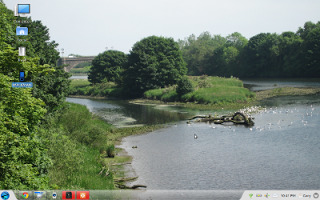 Having been a user of Zorin 5 up until recently I decided last weekend to download a copy of Zorin 6 and tonight I decided to install it. (Well my wife is watching Geordie Shore, what else am I to do?).
Having been a user of Zorin 5 up until recently I decided last weekend to download a copy of Zorin 6 and tonight I decided to install it. (Well my wife is watching Geordie Shore, what else am I to do?).Now this article is only based on first impressions and is not an in depth review but I have to say that Zorin 6 could be the best operating system I have ever used.
First of all we know that it is built on top of the latest version of Ubuntu so it has the latest software and it has all the stability that Ubuntu provides.
 The key though for me is that Zorin 6 isn't just another Ubuntu clone. In the review by Dedoimedo he asks is there room for Zorin with Ubuntu being so strong and Linux MINT being so good. Dedoimedo thinks there is and so do I.
The key though for me is that Zorin 6 isn't just another Ubuntu clone. In the review by Dedoimedo he asks is there room for Zorin with Ubuntu being so strong and Linux MINT being so good. Dedoimedo thinks there is and so do I.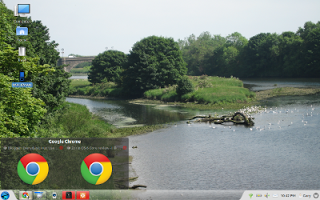 Zorin 6 is a good leap forward from Zorin 5. The whole experience is incredibly crisp. It feels 100% professional. The icons are crisp, the windows are crisp. The effects are brilliant and classy.
Zorin 6 is a good leap forward from Zorin 5. The whole experience is incredibly crisp. It feels 100% professional. The icons are crisp, the windows are crisp. The effects are brilliant and classy.It isn't just the looks that are good. The software works too.
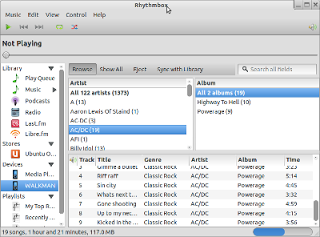 I ran Rhythmbox and previously I have had problems getting Rhythmbox to recognise a Sony Walkman MP3 player but in Zorin 6 it is picked up straight away. Now I know that is more down to the developers of Rhythmbox and to the Ubuntu team but as a user it is just nice.
I ran Rhythmbox and previously I have had problems getting Rhythmbox to recognise a Sony Walkman MP3 player but in Zorin 6 it is picked up straight away. Now I know that is more down to the developers of Rhythmbox and to the Ubuntu team but as a user it is just nice.No technical set up is required. Anyone who previously thought LINUX was difficult to set up needs to see this because Zorin makes Windows look like CICS running on an AS400 mainframe.
My wireless networks appeared instantly in the list and I connected to both in seconds. Chrome was installed as the default browser and Flash was available instantly as was Java and all the truetype fonts.
The collection of software installed is what you would expect including LibreOffice, Rhythmbox, VLC Player, Brasero, Thunderbird and of course WINE.
Zorin is obviously targetting Windows users and if Windows users take a look they could easily be persuaded to use Zorin.
Now this is my first night running Zorin 6 and I may come up against issues but I have installed all the peripherals that I might need and all the software works. There have been no crashes (nor would I expect there to be).
Over the past few weeks I have reviewed Puppy Linux and repeatedly said that I don't think you would use Puppy as your main operating system on your all singing and dancing laptop. Zorin basically puts the case forward for the reason why.
Don't get me wrong I think Puppy Linux is great and I love the version that was made by Scott Jarvis called Puppy Arcade. As a huge fan of retro gaming (I own everything from an Atari 2600 to a Sega Dreamcast including Sinclair Spectrums, an Atari ST and a Commodore Amiga) Puppy Arcade saves a huge amount of cable swapping and trawling through tapes and cartridges.
What should an operating system be? I could ask all of you that question and undoubtedly get a huge array of answers. For me an operating system should:
- load reasonably quickly
- be unobtrusive (no enforced updates, no popping up of messages all the time)
- be intuitive (icons should be laid out efficiently, menus should be clean and search should work)
- be stable (The operating system should just work and really any pre-installed applications should just work as by pre-installing applications you are validating them)
- be visibly attractive
- be secure
- not be a memory hog
Update
Zorin 6 - The best operating system I have ever used
 Having been a user of Zorin 5 up until recently I decided last weekend to download a copy of Zorin 6 and tonight I decided to install it. (Well my wife is watching Geordie Shore, what else am I to do?).
Having been a user of Zorin 5 up until recently I decided last weekend to download a copy of Zorin 6 and tonight I decided to install it. (Well my wife is watching Geordie Shore, what else am I to do?).Now this article is only based on first impressions and is not an in depth review but I have to say that Zorin 6 could be the best operating system I have ever used.
First of all we know that it is built on top of the latest version of Ubuntu so it has the latest software and it has all the stability that Ubuntu provides.
 The key though for me is that Zorin 6 isn't just another Ubuntu clone. In the review by Dedoimedo he asks is there room for Zorin with Ubuntu being so strong and Linux MINT being so good. Dedoimedo thinks there is and so do I.
The key though for me is that Zorin 6 isn't just another Ubuntu clone. In the review by Dedoimedo he asks is there room for Zorin with Ubuntu being so strong and Linux MINT being so good. Dedoimedo thinks there is and so do I. Zorin 6 is a good leap forward from Zorin 5. The whole experience is incredibly crisp. It feels 100% professional. The icons are crisp, the windows are crisp. The effects are brilliant and classy.
Zorin 6 is a good leap forward from Zorin 5. The whole experience is incredibly crisp. It feels 100% professional. The icons are crisp, the windows are crisp. The effects are brilliant and classy.It isn't just the looks that are good. The software works too.
 I ran Rhythmbox and previously I have had problems getting Rhythmbox to recognise a Sony Walkman MP3 player but in Zorin 6 it is picked up straight away. Now I know that is more down to the developers of Rhythmbox and to the Ubuntu team but as a user it is just nice.
I ran Rhythmbox and previously I have had problems getting Rhythmbox to recognise a Sony Walkman MP3 player but in Zorin 6 it is picked up straight away. Now I know that is more down to the developers of Rhythmbox and to the Ubuntu team but as a user it is just nice.No technical set up is required. Anyone who previously thought LINUX was difficult to set up needs to see this because Zorin makes Windows look like CICS running on an AS400 mainframe.
My wireless networks appeared instantly in the list and I connected to both in seconds. Chrome was installed as the default browser and Flash was available instantly as was Java and all the truetype fonts.
The collection of software installed is what you would expect including LibreOffice, Rhythmbox, VLC Player, Brasero, Thunderbird and of course WINE.
Zorin is obviously targetting Windows users and if Windows users take a look they could easily be persuaded to use Zorin.
Now this is my first night running Zorin 6 and I may come up against issues but I have installed all the peripherals that I might need and all the software works. There have been no crashes (nor would I expect there to be).
Over the past few weeks I have reviewed Puppy Linux and repeatedly said that I don't think you would use Puppy as your main operating system on your all singing and dancing laptop. Zorin basically puts the case forward for the reason why.
Don't get me wrong I think Puppy Linux is great and I love the version that was made by Scott Jarvis called Puppy Arcade. As a huge fan of retro gaming (I own everything from an Atari 2600 to a Sega Dreamcast including Sinclair Spectrums, an Atari ST and a Commodore Amiga) Puppy Arcade saves a huge amount of cable swapping and trawling through tapes and cartridges.
What should an operating system be? I could ask all of you that question and undoubtedly get a huge array of answers. For me an operating system should:
- load reasonably quickly
- be unobtrusive (no enforced updates, no popping up of messages all the time)
- be intuitive (icons should be laid out efficiently, menus should be clean and search should work)
- be stable (The operating system should just work and really any pre-installed applications should just work as by pre-installing applications you are validating them)
- be visibly attractive
- be secure
- not be a memory hog
Update
20 comments:
Feel free to comment on any of the blog posts. Please try to be constructive.
Offensive messages will be removed as will blatant adverts for misleading products and sites.
Thanks for visiting my blog
Saturday, 7 July 2012
Introduction
So what would you use puppy for?
1. As a guest operating system
2. Rescuing your files after operating system failure
3. Retro Gaming (Puppy Arcade)
4. On the fly software development
5. With the Raspberry PI
Summary
5 ways to use Puppy Linux
Introduction
So what would you use puppy for?
1. As a guest operating system
2. Rescuing your files after operating system failure
3. Retro Gaming (Puppy Arcade)
4. On the fly software development
5. With the Raspberry PI
Summary
18 comments:
Feel free to comment on any of the blog posts. Please try to be constructive.
Offensive messages will be removed as will blatant adverts for misleading products and sites.
Thanks for visiting my blog
Thursday, 5 July 2012
Introduction
For those who have been following you will know that I have recently embarked on a three part review of Puppy Linux. For those who haven't been following, I have recently embarked on a three part review of Puppy Linux.
In the previous reviews I looked at Wary and Slacko. In this third review I am looking at the best of the bunch which is Lucid Puppy.
The rest of this post will explain why I think Lucid outshines both Wary and Slacko and I have a confession to make that will make a lot of people shout "What? you have to be kidding". All will become clear as time goes by.
Startup - Attempt 1
Ok so I had a few issues when I first tried Lucid Puppy. I had downloaded the iso and tried to burn it as an image to a USB drive.When I rebooted I was left with a flashing cursor on the screen. Clearly this was not going to work
Startup - Attempt 2
The second attempt I tried to use UNetbootin. Again upon reboot the system would not load.Startup - Attempt 3
Time for the old school method. Burn the ISO to disk and reboot. I was presented with the following message:Performing a 'switch_root' to the layered file system... Kernel Panic- not syncing
A lesser person may well have become frustrated at this point. I did the usual Googling for an answer to my problem and I was presented with various options including
- Try loading without a save file and
- Your machine obviously does not have enough memory to run Lucid Puppy
Startup - Attempt 4
I downloaded Lucid Puppy again from the Puppy Download page and when I burned to disk this time the system booted successfully. Therefore I put attempt 3 down to a dodgy download.For those of you wondering why I haven't put attempts 1 and 2 down to a dodgy download as well then the answer is that really this should go down as attempt 6 because I tried attempts 1 and 2 again. In other words burning straight to USB and UNetbootin on this occasion let me down.
Boot Time
Now I've tried all three of the puppies I can honestly say there isn't much difference in the boot time.
Booting from CD with a save file takes approximately 2 minutes on my laptop. (Samsung R20 with 2 gb of ram). On a more modern machine it might boot faster and obviously with a hard drive install it would boot much faster.
I don't believe Puppy is a system for installing to your hard drive. It was built to run from memory and from removable media.
Connecting to the Internet
This is where Lucid Puppy beats both Slacko and Wary hands down. In all three reviews I have attempted to connect to the 3 mobile broadband network using the MIFI device.For both Wary and Slacko although I got there in the end the process of connecting to the net was very cumbersome.
With Lucid a window popped up as soon as I booted the first time with my ethernet and wireless cards detected.
When I click the wlan button both my home broadband and three broadband were selected automatically. All I had to do was enter the WPA key and I was connected.
After connecting to the internet obviously the first thing you want to do is browse. Now there are icons on the desktop and there is a menu button. For some reason I chose the menu button and clicked the internet menu and could not find a browser. Stupid move. Had I clicked the browse icon on the desktop all would have come clear very quickly.
A menu appears asking which browser you would like to install. The options include SeaMonkey (which is the defauly Puppy browser), Firefox, Chromium and Opera.
So which of the browsers did I decide to install. Well Chromium is my favourite browser but out of the listed items it takes up the most space at 26 mb. The others were all around the 15 or 16 mb mark.
Shocking Confession Time
I'm going to say something now and it is not to make myself notorious or to cause offence to millions of people worldwide. Are you ready?I have never liked FirefoxThere it is. I have said it. Now of course I need to qualify why I have never liked Firefox.
For years there was a battle raging on the net about which was the best browser and a bit like LINUX in general there were those singing the praises of Internet Explorer and those that sang the praises of Firefox.
Now we all know Internet Explorer is bad. Why is it bad? It is bad because for years web developers have had to write workaround after workaround trying to get their web pages to work under both Internet Explorer, Netscape Navigator, Firefox, Chrome, Safari and Opera. What is worse is that even different versions of Internet Explorer would show the page in a different style.
That is just one reason for not liking Internet Explorer and has nothing to do with Firefox. The other reason for not liking internet explorer is toolbars. Within Windows no matter what piece of software you install you will be asked whether you want to install a toolbar. What is worse than that is that the checkboxes are checked by default so if you do not read the text properly you will acidentally install that toolbar and so eventually you could end up with 6 or 7 toolbars taking up half the screen.
Again you might ask what has this got to do with Firefox. Well..... undoubtedly Firefox fans will say that its strongest feature is the number of add-ons and plugins that you can get for Firefox. This has always bothered me and I was delighted when Chrome came out. Sure I could have just kept the base install and not installed any add-ons but the problem is still the same. Firefox has too many menus and takes up too much of the screen.
Chrome and Chromium were just what I was looking for. A minimalist browser that just let me search and browse.
Back on track then the browser I ended up installing was Opera. I've always quite liked it and it was built for loading into memory in the same way Puppy does. I am typing this article using Opera and it works just fine.
Installing Flash
With Wary and Slacko after connecting to the internet I was offered the opportunity to install flash. With Lucid this option did not appear.To install Flash using Lucid I had to select the menu button and then from the internet menu there is an install flash icon.
Quick Pets
Another really useful feature in Lucid Puppy is the Quickpet application. This is simply a tabbed application which has links to install the most common and useful packages for Lucid Puppy.There are 6 tabs split as follows:
- Popular pets - Gimp, Pwidgets, Audacity, Songbird, WINE and Google Earth
- Internet pets - Firefox, SeaMonkey, Chromium, Opera, Thunderbird, Pidgin
- Useful pets - VLC, Kompozer, Cinelerra, JRE (java), Pdfedit, Inkscape
- SFS get - a list of a number of packages
- Drivers
- News
Save files
Puppy linux uses a save file to store data. When you reboot for the first time you are asked whether you want to create a save file and where you want to store it and how big is it going to be.One thing I noticed in Lucid is that unlike the graphical tools used by Wary and Slacko this one seems to go back in time and show a blue screened background and almost a dos like set of menus.
Desktop
The desktop for Lucid Puppy is very similar to that of Wary and Slacko.In the top left of the screen are five rows of icons.
- Row 1 - file, help, install, mount, control, edit, console
- Row 2 - write, calc, paint, draw
- Row 3 - browse, email
- Row 4 - Plan, Play
- Row 5 - Connect, Quickpet
Above the menu are icons for each of the drives connected to your machine.
Finally on the right hand side are icons for locking the screen. zipping files and a trash can.
There is nothing majorly different between Lucid, Wary and Slacko with regards to the desktop and by and large the default applications installed are the same.
The background for Lucid is a plain gray colour which isn't very inspiring but that can easily be changed.
Summary
Lucid is the best of the three versions of Puppy that I have reviewed. It is more polished than the other two and just small things make it so much better.Connecting to the internet is a basic requirement and Lucid gets it perfectly. Only 2 screens and I'm connected. Wary and Slacko required much more effort.
Installing commonly used applications via the Quickpet menu is brilliant. I think all distros could consider implementing this.
A choice of browsers is available for installation as opposed to being stuck with the default SeaMonkey. (Ok to be fair Wary and Slacko enable you to download PETs for other browsers).
Ratings:
Wary: 3/5
Slacko: 4/5
Lucid: 5/5
Lucid has the ability to rival Bodhi as a lightweight distro although given the choice I would still say Bodhi edges it.
Scrappy doo. Lucid has puppy powers
Introduction
For those who have been following you will know that I have recently embarked on a three part review of Puppy Linux. For those who haven't been following, I have recently embarked on a three part review of Puppy Linux.
In the previous reviews I looked at Wary and Slacko. In this third review I am looking at the best of the bunch which is Lucid Puppy.
The rest of this post will explain why I think Lucid outshines both Wary and Slacko and I have a confession to make that will make a lot of people shout "What? you have to be kidding". All will become clear as time goes by.
Startup - Attempt 1
Ok so I had a few issues when I first tried Lucid Puppy. I had downloaded the iso and tried to burn it as an image to a USB drive.When I rebooted I was left with a flashing cursor on the screen. Clearly this was not going to work
Startup - Attempt 2
The second attempt I tried to use UNetbootin. Again upon reboot the system would not load.Startup - Attempt 3
Time for the old school method. Burn the ISO to disk and reboot. I was presented with the following message:Performing a 'switch_root' to the layered file system... Kernel Panic- not syncing
A lesser person may well have become frustrated at this point. I did the usual Googling for an answer to my problem and I was presented with various options including
- Try loading without a save file and
- Your machine obviously does not have enough memory to run Lucid Puppy
Startup - Attempt 4
I downloaded Lucid Puppy again from the Puppy Download page and when I burned to disk this time the system booted successfully. Therefore I put attempt 3 down to a dodgy download.For those of you wondering why I haven't put attempts 1 and 2 down to a dodgy download as well then the answer is that really this should go down as attempt 6 because I tried attempts 1 and 2 again. In other words burning straight to USB and UNetbootin on this occasion let me down.
Boot Time
Now I've tried all three of the puppies I can honestly say there isn't much difference in the boot time.
Booting from CD with a save file takes approximately 2 minutes on my laptop. (Samsung R20 with 2 gb of ram). On a more modern machine it might boot faster and obviously with a hard drive install it would boot much faster.
I don't believe Puppy is a system for installing to your hard drive. It was built to run from memory and from removable media.
Connecting to the Internet
This is where Lucid Puppy beats both Slacko and Wary hands down. In all three reviews I have attempted to connect to the 3 mobile broadband network using the MIFI device.For both Wary and Slacko although I got there in the end the process of connecting to the net was very cumbersome.
With Lucid a window popped up as soon as I booted the first time with my ethernet and wireless cards detected.
When I click the wlan button both my home broadband and three broadband were selected automatically. All I had to do was enter the WPA key and I was connected.
After connecting to the internet obviously the first thing you want to do is browse. Now there are icons on the desktop and there is a menu button. For some reason I chose the menu button and clicked the internet menu and could not find a browser. Stupid move. Had I clicked the browse icon on the desktop all would have come clear very quickly.
A menu appears asking which browser you would like to install. The options include SeaMonkey (which is the defauly Puppy browser), Firefox, Chromium and Opera.
So which of the browsers did I decide to install. Well Chromium is my favourite browser but out of the listed items it takes up the most space at 26 mb. The others were all around the 15 or 16 mb mark.
Shocking Confession Time
I'm going to say something now and it is not to make myself notorious or to cause offence to millions of people worldwide. Are you ready?I have never liked FirefoxThere it is. I have said it. Now of course I need to qualify why I have never liked Firefox.
For years there was a battle raging on the net about which was the best browser and a bit like LINUX in general there were those singing the praises of Internet Explorer and those that sang the praises of Firefox.
Now we all know Internet Explorer is bad. Why is it bad? It is bad because for years web developers have had to write workaround after workaround trying to get their web pages to work under both Internet Explorer, Netscape Navigator, Firefox, Chrome, Safari and Opera. What is worse is that even different versions of Internet Explorer would show the page in a different style.
That is just one reason for not liking Internet Explorer and has nothing to do with Firefox. The other reason for not liking internet explorer is toolbars. Within Windows no matter what piece of software you install you will be asked whether you want to install a toolbar. What is worse than that is that the checkboxes are checked by default so if you do not read the text properly you will acidentally install that toolbar and so eventually you could end up with 6 or 7 toolbars taking up half the screen.
Again you might ask what has this got to do with Firefox. Well..... undoubtedly Firefox fans will say that its strongest feature is the number of add-ons and plugins that you can get for Firefox. This has always bothered me and I was delighted when Chrome came out. Sure I could have just kept the base install and not installed any add-ons but the problem is still the same. Firefox has too many menus and takes up too much of the screen.
Chrome and Chromium were just what I was looking for. A minimalist browser that just let me search and browse.
Back on track then the browser I ended up installing was Opera. I've always quite liked it and it was built for loading into memory in the same way Puppy does. I am typing this article using Opera and it works just fine.
Installing Flash
With Wary and Slacko after connecting to the internet I was offered the opportunity to install flash. With Lucid this option did not appear.To install Flash using Lucid I had to select the menu button and then from the internet menu there is an install flash icon.
Quick Pets
Another really useful feature in Lucid Puppy is the Quickpet application. This is simply a tabbed application which has links to install the most common and useful packages for Lucid Puppy.There are 6 tabs split as follows:
- Popular pets - Gimp, Pwidgets, Audacity, Songbird, WINE and Google Earth
- Internet pets - Firefox, SeaMonkey, Chromium, Opera, Thunderbird, Pidgin
- Useful pets - VLC, Kompozer, Cinelerra, JRE (java), Pdfedit, Inkscape
- SFS get - a list of a number of packages
- Drivers
- News
Save files
Puppy linux uses a save file to store data. When you reboot for the first time you are asked whether you want to create a save file and where you want to store it and how big is it going to be.One thing I noticed in Lucid is that unlike the graphical tools used by Wary and Slacko this one seems to go back in time and show a blue screened background and almost a dos like set of menus.
Desktop
The desktop for Lucid Puppy is very similar to that of Wary and Slacko.In the top left of the screen are five rows of icons.
- Row 1 - file, help, install, mount, control, edit, console
- Row 2 - write, calc, paint, draw
- Row 3 - browse, email
- Row 4 - Plan, Play
- Row 5 - Connect, Quickpet
Above the menu are icons for each of the drives connected to your machine.
Finally on the right hand side are icons for locking the screen. zipping files and a trash can.
There is nothing majorly different between Lucid, Wary and Slacko with regards to the desktop and by and large the default applications installed are the same.
The background for Lucid is a plain gray colour which isn't very inspiring but that can easily be changed.
Summary
Lucid is the best of the three versions of Puppy that I have reviewed. It is more polished than the other two and just small things make it so much better.Connecting to the internet is a basic requirement and Lucid gets it perfectly. Only 2 screens and I'm connected. Wary and Slacko required much more effort.
Installing commonly used applications via the Quickpet menu is brilliant. I think all distros could consider implementing this.
A choice of browsers is available for installation as opposed to being stuck with the default SeaMonkey. (Ok to be fair Wary and Slacko enable you to download PETs for other browsers).
Ratings:
Wary: 3/5
Slacko: 4/5
Lucid: 5/5
Lucid has the ability to rival Bodhi as a lightweight distro although given the choice I would still say Bodhi edges it.
15 comments:
Feel free to comment on any of the blog posts. Please try to be constructive.
Offensive messages will be removed as will blatant adverts for misleading products and sites.
Thanks for visiting my blog
My wife's Aunty and Uncle came up from Glasgow to Aberdeenshire to visit my mother in law for a few nights and en route stayed at our house for a meal.
After the meal my wife's Uncle asked whether he could use our PC to check his emails etc. My wife asked my son to give the Uncle his laptop to use which is running Windows 7 but I saw the instant opportunity to demonstrate the power of LINUX by letting him loose on my laptop running Mageia 2.
Now the reason I am running Mageia 2 is that I had an unfortunate incident last weekend whilst playing with the partitions on my laptop whereby I accidentally destroyed the version of Zorin I was running previously. This however was not I thought an issue because I had set up Mageia meticulously with the KDE 4 plasma desktop and I think it looks really impressive. I have even installed Compiz to add some whizzy effects. Add to this the Chromium browser and you would think you have a really good setup to demonstrate to a non Linux user.
Why did it all go so wrong?
What I initially failed to appreciate is that in Central Glasgow they have pretty decent broadband all the time running at around 8mb. Here in Aberdeenshire they have only just discovered colour television so our home broadband speed with Orange is under 2mb. I normally counteract this by using the 3 mobile broadband which can at times give you around 7mb but occasionally in bad weather and peak times it drops to about 2mb.For those of you unaware of this fact the weather in Scotland has been shockingly dull and dreary for the past month and there is a lot of fog in our area. I don't know if that affects mobile broadband signals but needless to say the 3 mobile broadband last night was running at around 2mb.
Instantly my wife's uncle's first response was "I don't know if the laptop is old or it is the software but the internet is very slow compared to my Macbook". When he said this a few things went through my head including "you stupid
The second reason why my demonstration failed was because of Chromium. The uncle is an Apple user. He is used to Safari. When there was an address in the toolbar he could not work out how to clear the address to type in a new one and so frequently placed the cursor at the end of the address bar and pressed the backspace key. I explained that you can just press CTRL and A to select the whole address and just press the delete key at which point he said "It is much easier in Safari". I fail to see what is so difficult in pressing CTRL and A and then the delete key.
My wife's uncle is a professional artist (Which goes someway to explaining his love of everything Apple) and he was demonstrating his work to me. Unfortunately the third thing went wrong at this point. One of the files he wanted to show me was a flash video and unfortunately due to the reinstall last weekend I had not got to the point of reinstalling Flash. Doh!!!
Compiz to the rescue
The one thing the Uncle did really like was the little effects Compiz gave when closing windows and navigating around web pages. Frequently he said things like "wow that is weird" and "that is really amazing". All this goes to prove is that it doesn't really matter to an Apple fanboy how good something is as long as it looks amazing. (I'll await the flames in the comment area for that statement).Summary
I tried to demonstrate the power of LINUX to a non LINUX user and I failed. I failed because I failed to appreciate that normal users do not care what is to blame for the internet going slowly. As far as they are concerned it is the machine they are using that is to blame.I failed to appreciate that even Chromium can be tricky to get used to even though I use it daily without any issues.
Finally I failed to set up my laptop properly in the first place to play Flash videos.
I failed the Linux Community
My wife's Aunty and Uncle came up from Glasgow to Aberdeenshire to visit my mother in law for a few nights and en route stayed at our house for a meal.
After the meal my wife's Uncle asked whether he could use our PC to check his emails etc. My wife asked my son to give the Uncle his laptop to use which is running Windows 7 but I saw the instant opportunity to demonstrate the power of LINUX by letting him loose on my laptop running Mageia 2.
Now the reason I am running Mageia 2 is that I had an unfortunate incident last weekend whilst playing with the partitions on my laptop whereby I accidentally destroyed the version of Zorin I was running previously. This however was not I thought an issue because I had set up Mageia meticulously with the KDE 4 plasma desktop and I think it looks really impressive. I have even installed Compiz to add some whizzy effects. Add to this the Chromium browser and you would think you have a really good setup to demonstrate to a non Linux user.
Why did it all go so wrong?
What I initially failed to appreciate is that in Central Glasgow they have pretty decent broadband all the time running at around 8mb. Here in Aberdeenshire they have only just discovered colour television so our home broadband speed with Orange is under 2mb. I normally counteract this by using the 3 mobile broadband which can at times give you around 7mb but occasionally in bad weather and peak times it drops to about 2mb.For those of you unaware of this fact the weather in Scotland has been shockingly dull and dreary for the past month and there is a lot of fog in our area. I don't know if that affects mobile broadband signals but needless to say the 3 mobile broadband last night was running at around 2mb.
Instantly my wife's uncle's first response was "I don't know if the laptop is old or it is the software but the internet is very slow compared to my Macbook". When he said this a few things went through my head including "you stupid
The second reason why my demonstration failed was because of Chromium. The uncle is an Apple user. He is used to Safari. When there was an address in the toolbar he could not work out how to clear the address to type in a new one and so frequently placed the cursor at the end of the address bar and pressed the backspace key. I explained that you can just press CTRL and A to select the whole address and just press the delete key at which point he said "It is much easier in Safari". I fail to see what is so difficult in pressing CTRL and A and then the delete key.
My wife's uncle is a professional artist (Which goes someway to explaining his love of everything Apple) and he was demonstrating his work to me. Unfortunately the third thing went wrong at this point. One of the files he wanted to show me was a flash video and unfortunately due to the reinstall last weekend I had not got to the point of reinstalling Flash. Doh!!!
Compiz to the rescue
The one thing the Uncle did really like was the little effects Compiz gave when closing windows and navigating around web pages. Frequently he said things like "wow that is weird" and "that is really amazing". All this goes to prove is that it doesn't really matter to an Apple fanboy how good something is as long as it looks amazing. (I'll await the flames in the comment area for that statement).Summary
I tried to demonstrate the power of LINUX to a non LINUX user and I failed. I failed because I failed to appreciate that normal users do not care what is to blame for the internet going slowly. As far as they are concerned it is the machine they are using that is to blame.I failed to appreciate that even Chromium can be tricky to get used to even though I use it daily without any issues.
Finally I failed to set up my laptop properly in the first place to play Flash videos.
33 comments:
Feel free to comment on any of the blog posts. Please try to be constructive.
Offensive messages will be removed as will blatant adverts for misleading products and sites.
Thanks for visiting my blog
|
|
|
|
-
Introduction By far the most read article on this site shows how to install Ubuntu alongside Windows 8 in 10 easy steps . Those ins...
-
Introduction This article will show you how to install Linux Mint 17 side by side with Microsoft Windows 7. The desktop environment that w...
-
Introduction One of the most common questions asked on the Linux based sub-reddits at Reddit.com is "Which Linux distribution wou...
-
Introduction This guide shows you how to create a bootable Linux Mint USB drive with persistence. Click here for an alternative guide...
-
Introduction One of the most talked about topics of the last year has been the Windows 8 debacle and how it is now much more difficult to...
Popular Posts
Subscribe
Popular This Month
What are other people buying?
| Zorin OS |
| Ubuntu |
| Linux Mint |
| Lubuntu |
| PCLinuxOS |
| Lubuntu |
| Xubuntu |
| Linux Lite |
- 4MLinux
- Android
- antiX
- applications
- Arch Linux
- beginners
- best linux
- Bodhi
- book review
- chakra
- chromebook
- cloud
- competitions
- Crunchbang
- daap
- Debian
- dosbox
- dual boot
- ebooks
- editorials
- Elementary OS
- Emmabuntus
- events
- Fedora
- Fuduntu
- google nexus
- Guest Post
- handylinux
- hardware
- how to
- humour
- install guide
- interview
- interviews
- Knoppix
- korora
- kubuntu
- Linux Lite
- linux mint
- linux news
- linux questions
- Linux Reviews
- lubuntu
- Lucid Puppy
- lxle
- LXPup
- macbook
- MacPup
- Mageia
- makulu
- Manjaro
- Mint
- Mozillux
- netbooks
- netrunner
- news
- opensuse
- OS4
- PCLinuxOS
- Peppermint Linux
- playlinux
- playonlinux
- podcasts
- Point Linux
- polls
- Precise Puppy
- Puppy Arcade
- Puppy LINUX
- Raspberry PI
- retrogaming linux
- reviews
- simplicity
- Slacko
- SLAX
- Snowlinux
- SolusOS
- SolyDX
- sparkylinux
- sysadmins
- tutorials
- UBUNTU
- ubuntu mate
- Videos
- which distro
- Windows
- WINE
- world cup 2014
- xubuntu
- Zorin


